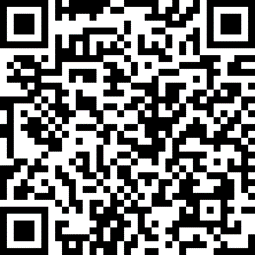案例#1
一位 25 岁的女性最近反复出现讲话口齿不清,当持续讲话时症状会恶化。她还出现吞咽困难,持续进食时会加重,并且还有在缝纫、阅读或看电视时会加重的复视现象。她报告头部沉重,很难抬起头来。她的症状在过去 6 个月期间逐渐恶化。她的腿部和手臂出现间歇性无力。由于腿部无力,她害怕跌倒,而且在梳头和使用体香剂时也有困难。她报告全身性疲乏的感觉,并且偶尔出现呼吸短促。
案例#2
一位 76 岁男性报告在过去 2 个月出现复视。在过去 2 周内他开始出现双侧眼睑下垂(下垂的眼睑)。他的眼睑下垂如此严重,以至于在阅读时需要把眼睛撑开。由于眼睑下垂和复视(双重视野),他不能开车。他的症状通常在早晨较轻微,而在整个白天内进展。
其他表现
该疾病通常出现三种不同形式中的一种:眼肌型、口咽型或全身型。大约 50% 的患者出现单纯的眼部症状(眼睑下垂、复视),即所谓的眼肌无力。[19]Drachman DB. Myasthenia gravis. N Engl J Med. 1994 Jun 23;330(25):1797-810.http://www.ncbi.nlm.nih.gov/pubmed/8190158?tool=bestpractice.com 50% 至 60% 的单纯眼部症状患者将进展为全身性疾病,而且绝大多数会在最初 1 至 2 年内出现。总的来说,15% 至 20% 的患者将经历肌无力危象(需要机械通气的急性发作),通常在 MG 确诊后最初 2 年内发生。[20]Bershad EM, Feen ES, Suarez JI. Myasthenia gravis crisis. South Med J. 2008 Jan;101(1):63-9.http://www.ncbi.nlm.nih.gov/pubmed/18176295?tool=bestpractice.com 携带肌肉特异性酪氨酸激酶 (MuSK) 抗体的患者亚群呈现 3 种主要表型:严重面咽肌无力,病程长时受累肌肉萎缩;显著的颈肌与呼吸肌无力,以致频繁发生危象;以及无法与非 MuSK MG 区分开来的临床特征。[3]Guptill JT, Sanders DB. Update on muscle-specific tyrosine kinase antibody positive myasthenia gravis. Curr Opin Neurol. 2010 Oct;23(5):530-5.http://www.ncbi.nlm.nih.gov/pubmed/20613516?tool=bestpractice.com 据报道,对于某些未检测到乙酰胆碱受体 (AChR) 抗体的眼肌型 MG 患者,使用以细胞为基础的分析方法可检测到 MuSK 自身抗体。[21]Tsonis AI, Zisimopoulou P, Lazaridis K, et al. MuSK autoantibodies in myasthenia gravis detected by cell based assay--A multinational study. J Neuroimmunol. 2015 Jul 15;284:10-7.http://www.ncbi.nlm.nih.gov/pubmed/26025053?tool=bestpractice.com 尚不清楚 LRP4- 和聚集蛋白-抗体阳性肌无力患者的临床表型,但在一份报告中,LRP4 患者有轻度到中度的全身型 MG,其模式与大部分 AChR 抗体阳性患者相似。[8]Zhang B, Shen C, Bealmear B, et al. Autoantibodies to agrin in myasthenia gravis patients. PLoS One. 2014 Mar 14;9(3):e91816.http://www.plosone.org/article/info%3Adoi%2F10.1371%2Fjournal.pone.0091816http://www.ncbi.nlm.nih.gov/pubmed/24632822?tool=bestpractice.com[9]Gasperi C, Melms A, Schoser B, et al. Anti-agrin autoantibodies in myasthenia gravis. Neurology. 2014 Jun 3;82(22):1976-83.http://www.ncbi.nlm.nih.gov/pubmed/24793185?tool=bestpractice.com[10]Zisimopoulou P, Evangelakou P, Tzartos J, et al. A comprehensive analysis of the epidemiology and clinical characteristics of anti-LRP4 in myasthenia gravis. J Autoimmun. 2014 Aug;52:139-45.http://www.ncbi.nlm.nih.gov/pubmed/24373505?tool=bestpractice.com[22]Higuchi O, Hamuro J, Motomura M, et al. Autoantibodies to low-density lipoprotein receptor-related protein 4 in myasthenia gravis. Ann Neurol. 2011 Feb;69(2):418-22.http://www.ncbi.nlm.nih.gov/pubmed/21387385?tool=bestpractice.com[23]Pevzner A, Schoser B, Peters K, et al. Anti-LRP4 autoantibodies in AChR- and MuSK-antibody-negative myasthenia gravis. J Neurol. 2012 Mar;259(3):427-35.http://www.ncbi.nlm.nih.gov/pubmed/21814823?tool=bestpractice.com[24]Zhang B, Tzartos JS, Belimezi M, et al. Autoantibodies to lipoprotein-related protein 4 in patients with double-seronegative myasthenia gravis. Arch Neurol. 2012 Apr;69(4):445-51.http://www.ncbi.nlm.nih.gov/pubmed/22158716?tool=bestpractice.com[25]Cossins J, Belaya K, Zoltowska K, et al. The search for new antigenic targets in myasthenia gravis. Ann N Y Acad Sci. 2012 Dec;1275:123-8.http://www.ncbi.nlm.nih.gov/pubmed/23278587?tool=bestpractice.com[26]Tsivgoulis G, Dervenoulas G, Tzartos SJ, et al. Double seropositive myasthenia gravis with acetylcholine receptor and lipoprotein receptor-related protein 4 antibodies. Muscle Nerve. 2014 Jun;49(6):930-1.http://www.ncbi.nlm.nih.gov/pubmed/24638957?tool=bestpractice.com 尚不清楚胶原 Q 抗体和皮层肌动蛋白抗体的临床重要性。

